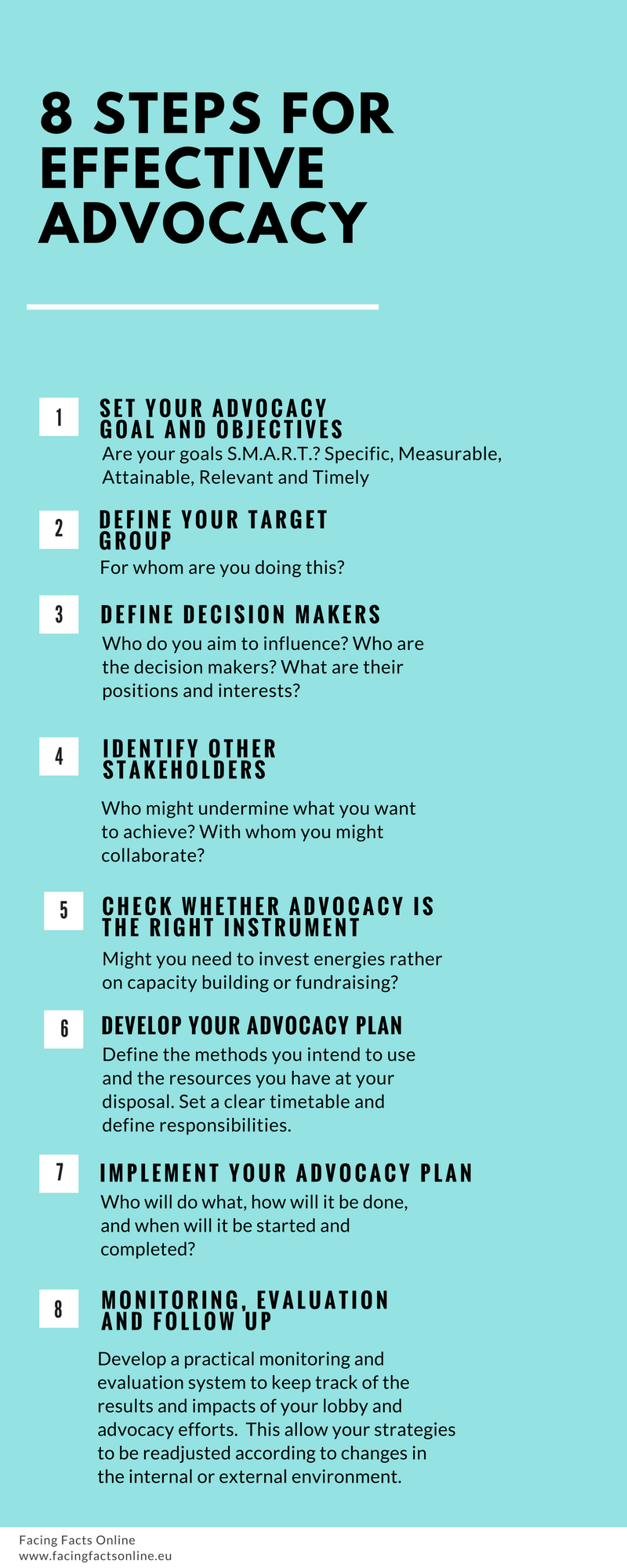Which opportunities for civil society?
8. For effective Advocacy
In the previous activity, you explored the tools available to EU citizens to influence the Union legislative process and raise awareness on anti-discrimination issues. You also heard the experience of civil society organisations active in reaching out to key stakeholders to achieve the institutional changes needed to pursue your goals.
We hope this course has raised your awareness of the tools at your disposal to take action for change in society. See the 8 steps to effective advocacy action in the infographic below.
DEFINE YOUR GOALS AND MAP YOUR STAKEHOLDERS

Once a meaningful and realistic goal has been defined, it is important to do stakeholder mapping.
Such mapping is a visual exercise and analysis tool that you can use to determine who to approach. Mapping allows you to identify stakeholders and their relationships, making it easier to understand the decision-making process in the context in which you live and work.
The first step is to understand that there are no magic lists: the final list depends on the objectives, the specific situation, and/ or exceptional events. The mapping will evolve with the situation and with stakeholders themselves. We therefore invite you to use this tool with great flexibility.
Brainstorm the stakeholders who have the power to influence, both negatively and positively, the decision-making processes related to your goal, without forgetting the neutral ones.
It can be helpful to start with the stakeholders you are in regular contact with (if any), and then move on to those outside your comfort zone. Try to think outside the box for a chance to get to the lesser known ones.
You can use the approach you prefer to make your mapping. You can draw it and then take a photo for easy sharing. You can also use a PowerPoint or Word document, using text boxes, graphics, and arrows to better visualise the relationships between stakeholders and your target. Alternatively, you can use one of the free mind mapping software, such as mindmeister and xmind.